I have had lots of questions recently about wildflower meadows, so I thought I would use this month to try and help. The end of September to early October is a great time to start to implement a perennial meadow.
The two main types of meadow are annual (resown every year) and perennial (comes back year after year).Annual meadows are great for a bold mass of colour that will catch everybody's attention, whilst perennial meadows will contain more of a mix of flowers and grasses.
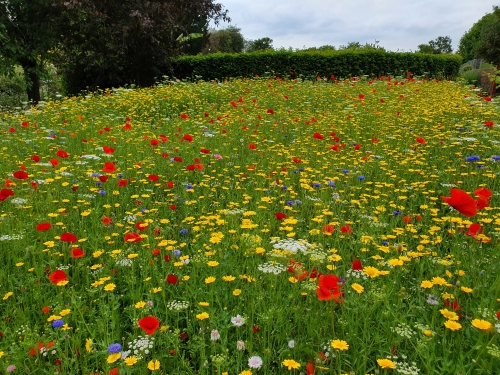
Annual Meadow
An annual meadow is sown on clear ground that has been prepared to a fine tilth similar to preparation work you would do to lay a new lawn. Its best to clear the area in September and then keep checking for weeds until you sow the seeds. The best time to sow the seed will be March - April, mix the seed with fine dry sand this will help to spread the seed more evenly. Walk over the prepared area and spread the seed by hand, first horizontally then vertically. This will give you the best chance of getting an even spread and not missing any areas. Once the seed is down you can lightly rake over the area and tread or roll the surface to firm the seeds in place.
From my own experience you want it to rain at least every four days over the first couple of weeks, but if this does not happen use a sprinkler to get it going. After the the first 2 weeks you will see germination, from this point on just keep a look out for weeds and remove them as much as possible, just be sure you don't walk on the meadow. Use a long hoe around the side as far as you can reach in. If there are weeds further in you may find a long arm pruner is helpful to cut the weeds back which will give the wild flowers time to take over and out grow the weeds.
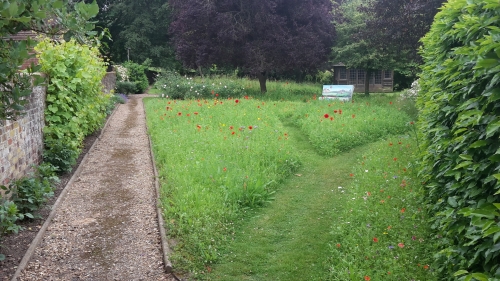
Annual meadows generally start flowering from the end of May – early July and finish August – October depending on weather conditions.
Perennial Meadow
Perennial meadows can be started in a variety of different ways, the new recommended way to start a meadow from scratch on an area of land that was very weedy or a flower bed is to clear an area the same as the annual meadow but also add a layer of sterile mulch to help suppress the weeds. The best time to sow the seeds is late September to early October when the soil is easier to work.
The first year of establishment is the most important stage of creating a good strong healthy meadow. Keep the meadow at no more then 10cm in height and make sure the meadow is irrigated every four days if there is no rain from April to June. As you are keeping the meadow fairly low you can maintain the weeds by hand digging them out, its best try not to disturb any of the soil under the mulch as this will bring up more weed seeds. Cut the meadow down in August and remove the cuttings.
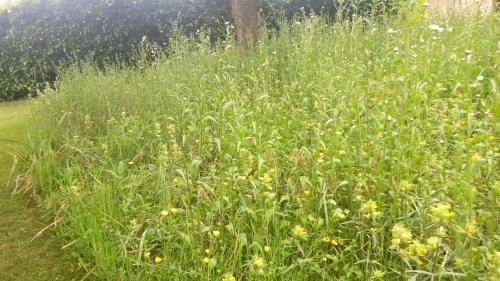
Year 2 you will start to get flower and see what all of your efforts have been for , will still require some irrigation early on like year one, but only cutting the meadow down in August and removing all of the cuttings. From now on the meadow should go from strength to strength just keep an eye on weeds creeping in, the quicker you get the weeds out the better it will be.
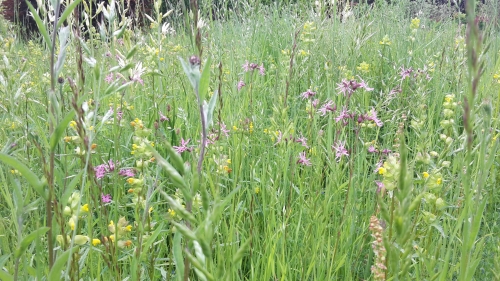
Another method of creating a perennial meadow is to establish one in already established grassland. I have done this for many years now re-introducing British native species in orchards and wild meadow areas. This is done with the same routine as above apart from the initial preparation work is different. First you cut the grass as short as possible it doesn't matter if you scalp the ground in places. Then using a motorised scarifier, scarify the entire area over and over until you can see roughly about 50% bare soil. Make sure all off the grass debris is taken off of the area and try feel in any major holes to stop puddling points. By doing this you will open up the soil for the seed to be sown in to and weaken the grass. In your seed mix you will also want to add yellow rattle as this will help reduce the grass in vigour over the coming years, the more the grass is kept at bay the less competition there is for the flowers to thrive.
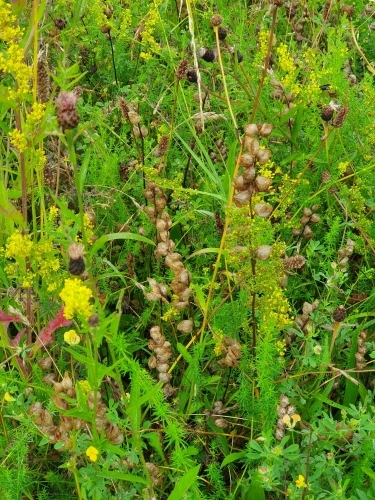
I hope this helps everybody with there future meadow ideas, I am sure the Village in Bloom group would love to hear about any wildflower plans you might have for your front gardens.







Make A Comment
Comments (0)